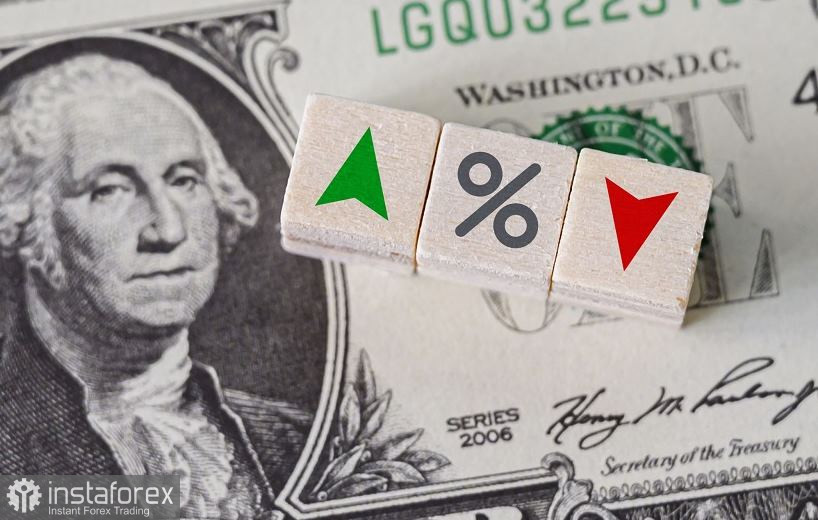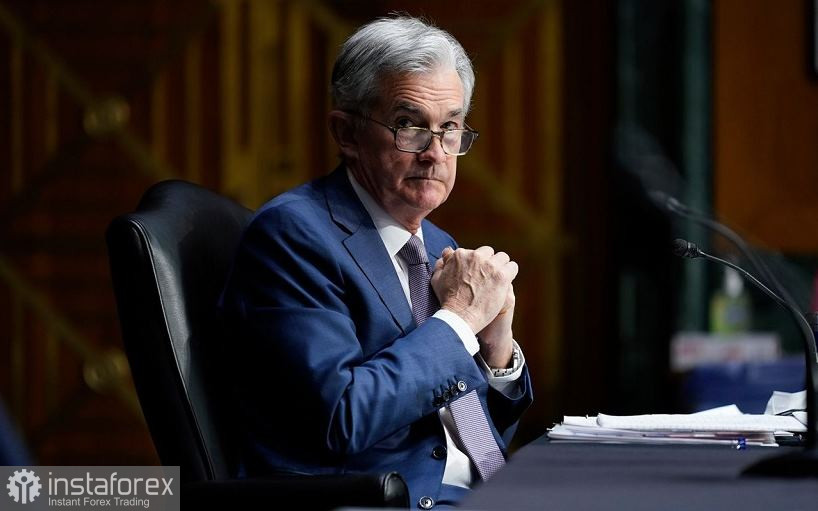The euro-dollar pair continues to work out the levels, describing a wave-like trajectory. Last Thursday, the price tested the upper limit of the 1.1230-1.1350 range, while literally the next day it collapsed to the level of 1.1234. This week, EUR/USD bulls seized the initiative again, gradually moving up. The pair is rising without any enthusiasm and a "spark": the pre-holiday apathy of the market is manifested in all its glory. On the other hand, there are positive aspects in the current situation. The pair almost pushes off from the boundaries of the price range with precision, captivating with its predictability. The pendulum is swinging with the same magnitude for the second consecutive week, allowing you to go into buying and selling.
Against the background of low liquidity and impassiveness pre-holiday trading, the pair is stuck in flat, waiting for information drivers. Rare news and near-market rumors push the price up and down - but in fact, the foreign exchange market has already fallen into the traditional pre-Christmas suspended movement with low volatility.

The main block of macroeconomic news on the EUR/USD pair will be published tomorrow, during the US trading session on Thursday. But today, traders were entirely focused on a single release, which turned out to be on the side of the greenback. The indicator of US consumer confidence turned out to be much better than forecasts: with a forecast of growth to 111.2 points, it came out at 115.8 - this is the strongest result since July of this year. The indicator has increased quite sharply and unexpectedly, since over the past three months it has fluctuated in the range of 109-111 points. As you know, this index is a leading indicator of consumer spending, so here we can return to the issue of inflationary growth in the United States.
The fact is that the market has recently become concerned again about the issue of raising the rate next year. According to a number of experts, the hawkish expectations of most traders are too high. And this fact can do a disservice to the greenback. Some currency strategists suggest that the Federal Reserve may even pause the process of tightening monetary policy after the first rate hike. This scenario cannot be ruled out, especially if the growth of inflation in the United States slows down in the first half of the year. In this case, the central bank may raise the rate at the June or July meeting, and then take a wait-and-see position. And although these arguments are too hypothetical, they are not without reason.
It should be noted here that following the results of the Fed December meeting, the market really had an appetite: traders started talking not even about a double, but about a triple hike within the next year. The reason for such conversations was the point forecast, which was updated at the Fed's last meeting. Let me remind you that the updated chart exceeded even the wildest expectations of experts. All members of the Committee, without exception, predicted the first rate hike next year. Moreover, ten members of the Committee expect three rounds of promotion. The central bank is ready to keep a similar pace in 2023: most representatives of the Fed also predicted three increases.
At the same time, Fed Chairman Jerome Powell maintains a cautious position. On the one hand, he actually agreed that the central bank would have to use leverage next year in response to a record increase in inflation. But at the same time, he does not share the enthusiasm of some of his colleagues who are lobbying for a double or triple increase. Powell's restraint did not allow the EUR/USD bears to resume the downward trend and settle below the 1.1200 mark. And, apparently, his skepticism about the pace of monetary policy tightening is now coming to the fore.
It is also necessary to recall that Powell at a press conference focused his attention on the negative aspects of the November Nonfarm. He said that the latest data in the US labor market "disappointed" him. The number of people employed in the non-agricultural sector increased by only 210,000 in November, with a growth forecast of 530,000. According to Powell, the indicator of the able-bodied population "is of concern." Secondly, Powell said that the Fed has not yet developed a common position on the duration of the pause between the end of the stimulus program and the first increase in the interest rate. This remark also became a "cold shower" for dollar bulls. After all, according to general expectations, the central bank will decide on the first hike in April next year (and then in July, and possibly at the end of 2022).

In other words, Powell's low-key attitude suggests that the Fed may not be pursuing the most hawkish scenario of a triple rate hike next year. Moreover, according to some experts, a wave of weakening in the US economy early next year will allow the US central bank to postpone the start of tightening monetary policy. In particular, if Nonfarm continues to disappoint, and inflation slows down, the aggressive rate of rate hikes will be a big question mark.
Such pessimistic thoughts do not allow the dollar to "become impudent", even against the euro. The greenback obediently fluctuates within a wide-range flat, the borders of which correspond to the marks of 1.1230 and 1.1350 (the lower and middle lines of the Bollinger Bands indicator on the D1 timeframe). To continue the downward trend, the EUR/USD bears need additional arguments (hawkish comments from Fed members, growth of key macroeconomic indicators). It is obvious that the main events of a fundamental nature will unfold as early as next year, therefore, in the medium term, the pair will continue to trade in the above range.





















